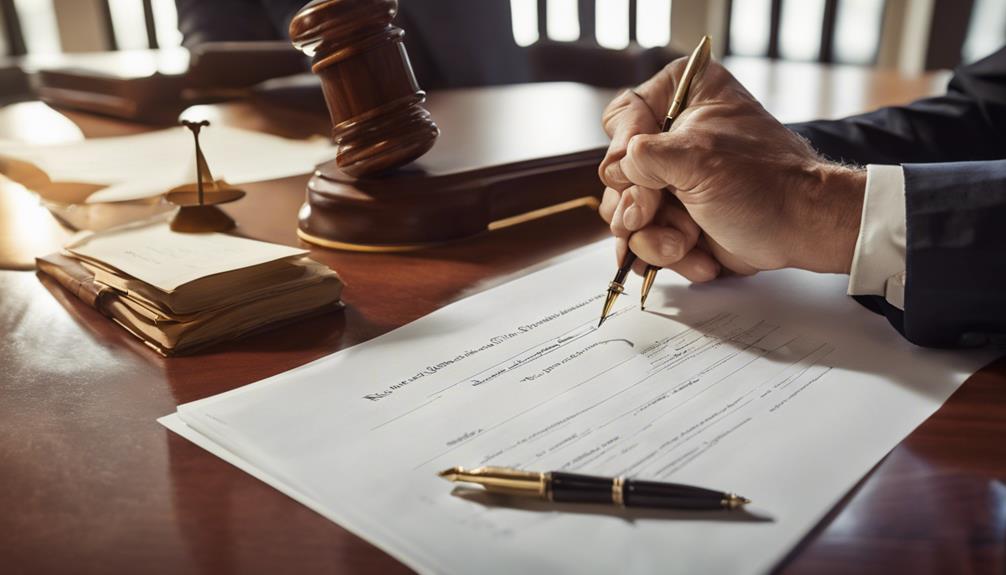Have you ever pondered how to navigate the emotional turmoil that follows a divorce? Dealing with sadness after such a life-altering event can feel overwhelming, but there are strategies that can assist us in coming out stronger on the other side.
By exploring avenues of emotional support, engaging in therapeutic activities, prioritizing self-care, and delving into new interests, we can begin to piece together our sense of self and identity post-divorce.
These coping mechanisms not only aid in healing but also pave the way for a brighter future ahead.
Key Takeaways
- Seek strong emotional support from loved ones to ease post-divorce sadness.
- Engage in therapeutic activities like art therapy for emotional processing.
- Prioritize self-care practices such as exercise, mindfulness, and adequate sleep.
- Explore new hobbies and interests to aid in personal growth and renewal.
Emotional Support From Loved Ones
Having a strong support system of loved ones is crucial in easing the feelings of sadness and loneliness that often accompany divorce. Emotional support plays a vital role in helping individuals navigate the challenging post-divorce period. When surrounded by caring family and friends, one can find comfort, understanding, and a sense of belonging during these trying times. Studies have shown that those with supportive relationships are better equipped to cope with the emotional turmoil that follows a divorce. Open communication and empathy from loved ones can aid in processing complex emotions and rebuilding emotional strength.
Sharing our feelings and experiences with trusted individuals fosters healing and promotes emotional well-being after divorce. Knowing that we've people who genuinely care about our well-being can provide solace and reassurance. Through the power of love, empathy, and understanding, our support system can help us find light in the darkness of post-divorce sadness.
Engaging in Therapeutic Activities

Exploring therapeutic activities post-divorce can offer a creative and effective way to process emotions and reduce stress during this challenging time. Engaging in art therapy, music therapy, or dance therapy can provide a valuable outlet for expression, allowing individuals to delve into their feelings in a non-verbal manner. These activities have been proven to not only enhance emotional healing but also improve overall well-being after a divorce.
For instance, art therapy enables individuals to visually represent their emotions and experiences, aiding in a deeper understanding of their inner selves and facilitating the healing process. By incorporating therapeutic activities into your routine, you can embark on a journey of self-discovery and self-expression that fosters emotional growth and resilience.
Prioritizing Self-Care Practices
Prioritizing self-care practices post-divorce is crucial for nurturing emotional well-being and promoting resilience during the recovery process. Engaging in regular exercise not only boosts endorphins but also reduces stress, aiding in overall well-being.
Mindfulness and meditation are powerful tools for managing negative emotions, enhancing focus, and building emotional resilience. Adequate sleep is vital for emotional healing and cognitive function, supporting your journey through divorce recovery.
Nourishing your body with nutritious foods is key to physical health, mood stability, and improved energy levels post-divorce. Setting boundaries and learning to say no to additional stressors are essential for maintaining emotional balance and self-compassion.
Exploring New Hobbies and Interests

In the journey of post-divorce healing and self-discovery, embracing new hobbies and interests can serve as a refreshing pathway towards personal growth and emotional rejuvenation. Exploring activities that bring us joy and excitement not only provides a distraction from negative emotions but also aids in rediscovering our personal passions and identity. Trying out different hobbies opens doors to personal growth, the development of new skills, and the expansion of our social connections. Engaging in creative or physical pursuits acts as a healthy outlet for processing emotions and reducing stress levels. As we find new interests post-divorce, we pave the way for empowerment, renewal, and a fresh perspective on life.
| Benefits of Exploring New Hobbies | ||
|---|---|---|
| Fulfillment | Distraction | Personal Growth |
| Rediscovery | Building Skills | |
| Reducing Stress | Empowerment | Renewal |
| Fresh Perspective |
Seeking Professional Counseling
When facing the emotional challenges of divorce, seeking professional counseling can provide personalized strategies to effectively manage sadness and navigate the complexities of rebuilding a positive outlook on life. Here's why professional counseling can be a beneficial step towards healing:
- Personalized Strategies: Therapists offer tailored approaches to help individuals address their unique emotional needs and struggles post-divorce.
- Develop Coping Mechanisms: Through counseling, individuals can learn healthy coping mechanisms to deal with the sadness and stress associated with divorce.
- Reduce Risk of Depression: Seeking professional help can lower the chances of developing clinical depression by addressing emotional issues early on.
- Safe Space for Expression: Counselors provide a supportive environment where individuals can freely express their emotions, process their feelings, and work towards healing and growth.
Professional counseling serves as a beacon of hope during challenging times, offering guidance and support as individuals navigate the turbulent waters of post-divorce emotions.
Frequently Asked Questions
How Long Does It Take to Emotionally Recover From a Divorce?
It varies, but emotional recovery from divorce typically takes 2-3 years. Factors like marriage length and support influence this. Women may recover faster. Grief, acceptance, self-esteem rebuilding, and self-care aid in the process.
How Do I Get Over My Grieving Divorce?
We understand the pain of grieving after divorce. It's essential to acknowledge our feelings, seek support, engage in self-care, and allow ourselves time to heal. Together, we can navigate this journey towards overcoming sadness and finding peace.
When Does the Pain of Divorce Stop Hurting?
We find the pain of divorce usually eases within 2 to 3 years. Emotional distress peaks post-divorce but diminishes with time. Self-care, therapy, social support, and positive activities speed up healing. It's a non-linear journey, but recovery is possible.
How Do You Cope With the Sadness of Separation?
We navigate the depths of separation with self-care, support from loved ones, and therapy. Exploring new interests and showing self-compassion guide us towards healing. It's a journey we embrace together, finding strength in vulnerability and growth.
Conclusion
As we navigate through the rollercoaster of emotions post-divorce, remember to embrace the sadness and seek support from loved ones.
It's ironic how facing our pain head-on can lead to healing and growth.
By taking proactive steps towards self-care and seeking professional help when needed, we can emerge stronger and more resilient than before.
Let's embrace the journey of healing and find peace amidst the storm.











